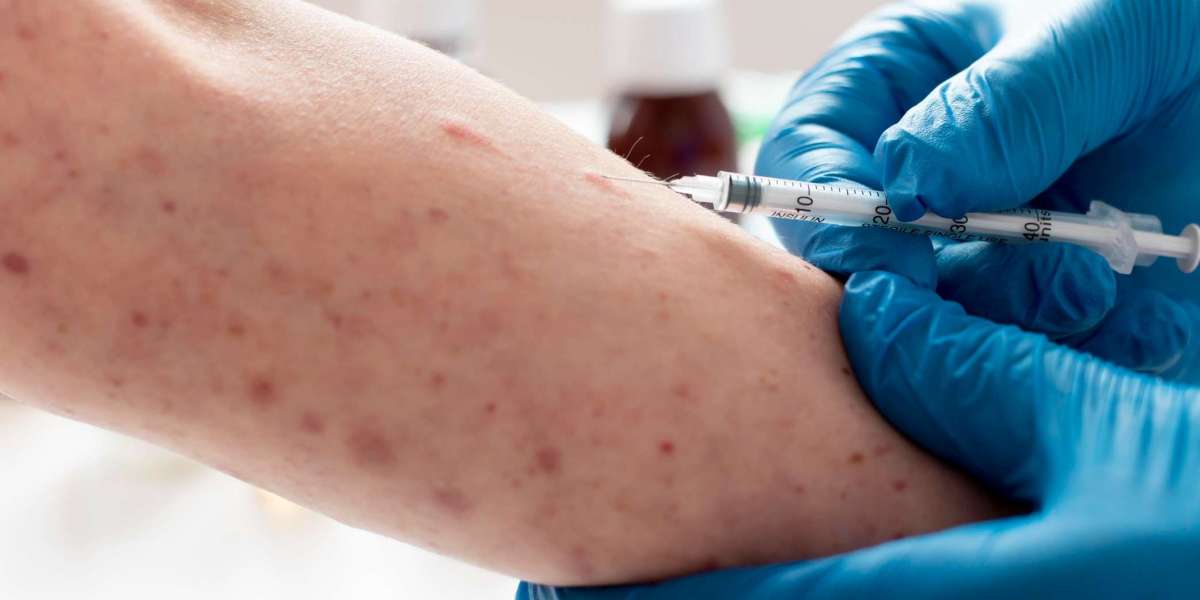Skin rashes are a common dermatological issue that can cause significant discomfort and distress. Whether caused by allergies, infections, or other irritants, skin rashes can disrupt daily life and require effective treatment to relieve symptoms and prevent recurrence. For those seeking skin rash treatment in Alexandria, this article provides a comprehensive guide to understanding, managing, and preventing skin rashes.
Understanding Skin Rashes
A skin rash is an area of irritated or swollen skin, often characterized by redness, itching, and discomfort. Rashes can vary in appearance and severity, and they may occur on any part of the body. Common types of skin rashes include:
Atopic Dermatitis (Eczema): A chronic condition causing dry, itchy, and inflamed skin.
Contact Dermatitis: Caused by direct contact with an irritant or allergen, leading to red, itchy patches.
Psoriasis: An autoimmune condition that results in thick, scaly patches of skin.
Heat Rash: Small, itchy red bumps caused by blocked sweat ducts.
Hives (Urticaria): Raised, itchy welts on the skin, often triggered by an allergic reaction.
Causes of Skin Rashes
Understanding the cause of a skin rash is essential for effective treatment. Common causes include:
Allergens: Such as pollen, pet dander, certain foods, and insect stings.
Irritants: Including soaps, detergents, perfumes, and certain fabrics.
Infections: Caused by bacteria, viruses, fungi, or parasites.
Medical Conditions: Such as autoimmune diseases, hormonal imbalances, and chronic illnesses.
Environmental Factors: Heat, humidity, and exposure to sun or cold.
Top Skin Rash Treatments
Effective skin rash treatment involves identifying the underlying cause and choosing appropriate therapies to alleviate symptoms and prevent recurrence. Here are the top treatments for managing skin rashes:
Topical Corticosteroids
Topical corticosteroids are commonly prescribed to reduce inflammation and relieve itching. They are available in various strengths, from over-the-counter hydrocortisone creams to potent prescription formulations.Application: Apply a thin layer of corticosteroid cream to the affected area as directed by a healthcare provider. Use sparingly on sensitive areas like the face and groin.
Antihistamines
Antihistamines can help alleviate itching and reduce allergic reactions. They are available in oral and topical forms.Oral Antihistamines: Such as diphenhydramine (Benadryl) and cetirizine (Zyrtec), can provide systemic relief from itching.
Topical Antihistamines: Creams and lotions containing antihistamines can be applied directly to the rash for localized relief.
Moisturizers and Emollients
Keeping the skin moisturized is crucial for managing conditions like eczema and psoriasis. Regular use of moisturizers can soothe dry, itchy skin and promote healing.Choosing a Moisturizer: Opt for fragrance-free, hypoallergenic products designed for sensitive skin. Ingredients like ceramides, glycerin, and hyaluronic acid can provide deep hydration.
Calamine Lotion
Calamine lotion is a popular remedy for soothing itchy and irritated skin. It is especially effective for rashes caused by poison ivy, insect bites, and chickenpox.Application: Apply calamine lotion to the rash using a cotton ball or pad. Allow it to dry on the skin to form a protective barrier.
Oatmeal Baths
Colloidal oatmeal has anti-inflammatory properties that can help relieve itching and irritation. Oatmeal baths are particularly beneficial for conditions like eczema and hives.Preparation: Add colloidal oatmeal to lukewarm bathwater and soak for 15-20 minutes. Pat the skin dry and apply a moisturizer immediately after bathing.
Antibiotic and Antifungal Treatments
If a skin rash is caused by a bacterial or fungal infection, appropriate antimicrobial treatments are necessary.Antibiotic Ointments: Such as mupirocin, can be applied to bacterial infections like impetigo.
Antifungal Creams: Such as clotrimazole and miconazole, can treat fungal infections like athlete's foot and ringworm.
Phototherapy
Phototherapy, or light therapy, involves exposing the skin to controlled amounts of natural or artificial ultraviolet light. It is used to treat conditions like psoriasis and eczema.Procedure: Phototherapy should be administered by a healthcare professional to ensure proper dosing and minimize risks.
Avoidance of Triggers
Identifying and avoiding triggers is essential for preventing recurrent skin rashes. Keep a diary of potential allergens and irritants to determine what may be causing flare-ups.Common Triggers: Include certain foods, detergents, soaps, and environmental factors. Modify your environment and habits to minimize exposure to these triggers.
Home Remedies and Natural Treatments
Several home remedies and natural treatments can provide relief from skin rash symptoms.Aloe Vera: Aloe vera gel has soothing and anti-inflammatory properties. Apply pure aloe vera gel directly to the rash.
Coconut Oil: Coconut oil can moisturize and protect the skin. Apply a thin layer to the affected area.
Tea Tree Oil: Tea tree oil has antiseptic and anti-inflammatory properties. Dilute it with a carrier oil and apply sparingly to the rash.
When to See a Doctor
While many skin rashes can be treated at home, some require medical attention. Seek professional help if you experience:
Severe Symptoms: Such as intense itching, pain, or swelling.
Signs of Infection: Including pus, increased redness, and warmth around the rash.
Persistent Rashes: That do not improve with home treatment.
Systemic Symptoms: Such as fever, difficulty breathing, or widespread rash.
Finding Skin Rash Treatment in Alexandria
If you are looking for effective skin rash treatment in Alexandria, consider the following steps to find the best care:
Consult a Dermatologist
Dermatologists specialize in diagnosing and treating skin conditions. Schedule an appointment with a board-certified dermatologist in Alexandria for an accurate diagnosis and personalized treatment plan.Check Credentials and Reviews
Ensure that the healthcare provider is board-certified and has positive reviews from patients. Look for feedback on their expertise, communication, and patient care.Explore Treatment Options
A reputable dermatologist will offer a range of treatment options tailored to your specific needs. Discuss the potential benefits and risks of each treatment to make an informed decision.Follow-Up Care
Effective management of skin rashes often requires follow-up appointments to monitor progress and adjust treatments as needed. Choose a provider who offers comprehensive follow-up care and support.
Preventing Skin Rashes
Prevention is key to managing skin rashes effectively. Here are some tips to minimize the risk of developing rashes:
Maintain Good Hygiene
Regularly wash your hands and body to remove potential allergens and irritants. Use gentle, fragrance-free soaps and avoid excessive scrubbing.Wear Protective Clothing
Protect your skin from environmental factors like sun, wind, and cold by wearing appropriate clothing. Use sunscreen to prevent sunburn and cover exposed skin during outdoor activities.Use Hypoallergenic Products
Choose skincare and household products labeled as hypoallergenic and free of fragrances, dyes, and harsh chemicals.Stay Hydrated
Drink plenty of water to keep your skin hydrated from within. Hydrated skin is less prone to irritation and dryness.Manage Stress
Stress can exacerbate skin conditions like eczema and psoriasis. Practice stress management techniques such as meditation, yoga, and deep breathing exercises.
Conclusion
Managing skin rashes effectively involves a combination of appropriate treatments, lifestyle changes, and preventive measures. For those seeking skin rash treatment in Alexandria, consulting with a knowledgeable dermatologist is crucial for accurate diagnosis and personalized care.
By understanding the causes of skin rashes and exploring the top treatment options, you can find relief from symptoms and prevent recurrence. Whether you opt for topical treatments, antihistamines, or natural remedies, the right approach can significantly improve your skin health and overall well-being.







